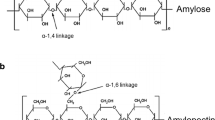Conclusions
With respect to the mechanism of moisture removal, the process of drying viscose staple fibre is divided into two stages. The first stage takes place at a constant rate. Removal of moisture takes place by the mechanism of evaporation from a free surface. In the second stage, mainly solvated bound water is removed, by a desorption mechanism, which is described by an equation for a first order chemical reaction.
The main factor which determines the kinetics of fibre drying in the second state is temperature. At a temperature of 100–120°C, the amount of air delivered to the second dryer can be reduced from 14,000–16,000 to 3,000–5,000 m3/h.
The significant effect of the degree of fibre loosening on drying kinetics has been demonstrated.
Similar content being viewed by others
Literature cited
B. S. Sazhin, Bases of Drying Technique [in Russian], Khimiya, Moscow (1984).
V. A. Sumetov, Drying and Humidification of Bast-Fibre Materials [in Russian], Legkaya Industriya, Moscow (1980).
Additional information
Translated from Khimicheskie Volokna, No. 6, pp. 28–32, November–December, 1986.
Rights and permissions
About this article
Cite this article
Lisyakova, G.V., Serkov, A.T. & Tsyganov, K.I. Drying and conditioning viscose staple fibre. Fibre Chem 18, 444–449 (1987). https://doi.org/10.1007/BF00549410
Received:
Issue Date:
DOI: https://doi.org/10.1007/BF00549410




